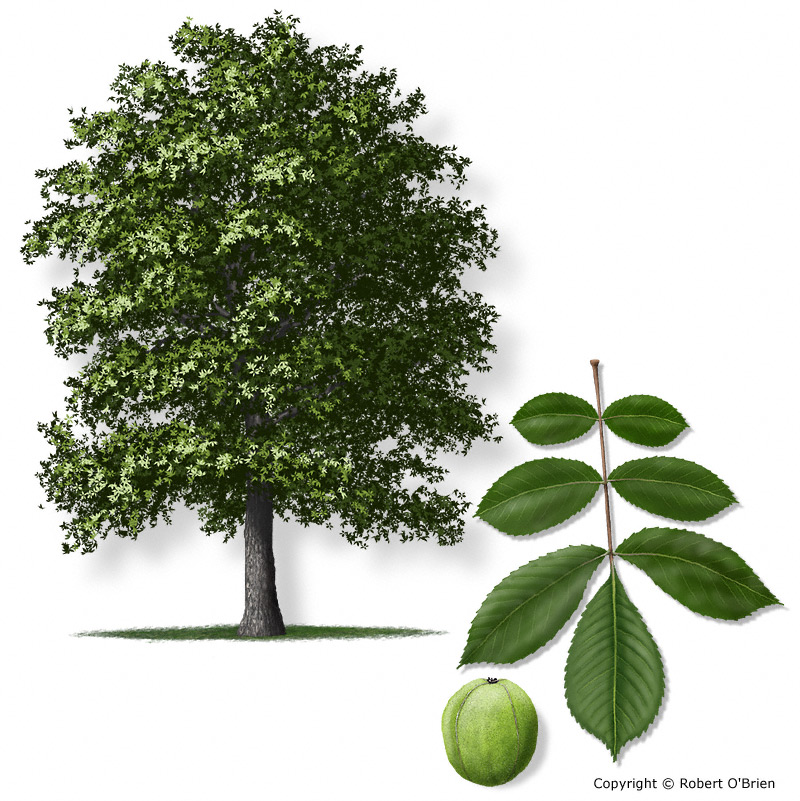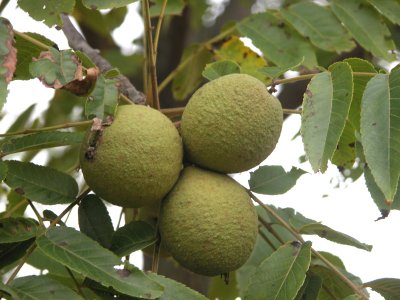It seems like a new disease enters Minnesota every month now. This time Arbor Doctor gets to inform you about a lesser known disease that effects our walnut trees. Educating our customers about what is happening helps them make decisions about their trees health. We have done a ton of research and worked with our partnering chemical companies to let you in on some information about this insect. First of course you will need to learn about the disease and learn what to look for.
Thousand Cankers Disease is a fungal disease that is spread by the Walnut Twig Borer. This insect is microscopic in size as you can see in the pictures. It is not even the size of a pinhead which will make detecting this insect a complete nigtmare. Furthermore the insect has never been controlled once it has become present in a walnut tree. The borer carries the disease from tree to tree and bores through the bark to get to their food source. Which is not coincedentally the source for food supply throughout the walnut tree. The Black Walnut (native Minnesota tree) is by far the most devatsated of the walnut species. The fungus itself is spred throughout the tunnels that the twig borer makes.
This fungi spreads and starts forming into cankers which harden and act like coalesces which restrict nutrient flow throughout the living layer of the tree. The insect itself does a ton of damage as it is active in almost all of the growing season unlike many of our other common pests in Minnesota.
Ok so this is what you need to really know about this disease. Its control is fairly experimental. Most sites will say that their is no control over this disease. That will of course sound very scary but from all research this disease is very slow moving and steps can be taken to save a tree from this disease. It generally takes 7-8 years for this disease to kill a tree. The state of Minnesota has quarentined movement of Walnut wood to help the spread of disease.
Every site suggests that no trunk spray or root feeding will help cure this disease. We did find that by far the most effective way to stop this disease is to inject trees with Immicloprid and also use a fungicide similar to propocolozol to help kill the fungus and the insect. We will contine to monitor the disease and start treating it as soon as people are interested in saving their trees. We will warrenty these trees for our customers. The treatment will be experimental but if you do nothing about this disease you will have a dead black walnut.
Juglandoideae family
Common Name: Black hickory
Scientific name: Carya texana
Leaves:Pinnately compound leaves, 7 leaflets, nuts are bronze to reddish brown
Bark: Medium gray color and rugged texture
Height: 135" max
Spread: 50-70'
General info: North American tree in the walnut family. Found generally in the great plains and southern region.
Pests and diseases: Aphids and other minor pests are common in hickory trees
Common Name: Black walnut
Scientific name: Juglans nigra
Leaves: Alternate leaves, pinnate 12-24 inches long, 15-23 leaflets
Bark: Smooth silvery white when small, dark gray and deeply fissured on old trees
Height: 100'-130' tall at max
Spread: 70-80'
General info: These trees are native to the United states and create edible walnuts. Most are harvested in Missouri and start to grow on a tree as young as 5 years old. Live to be 130 years old at max and not recommended in landscapes near homes or streetsides.
Pests and diseases: Thousand cankers disease is a common problem of walnut. Other issues include codling moth and walnut curculio





